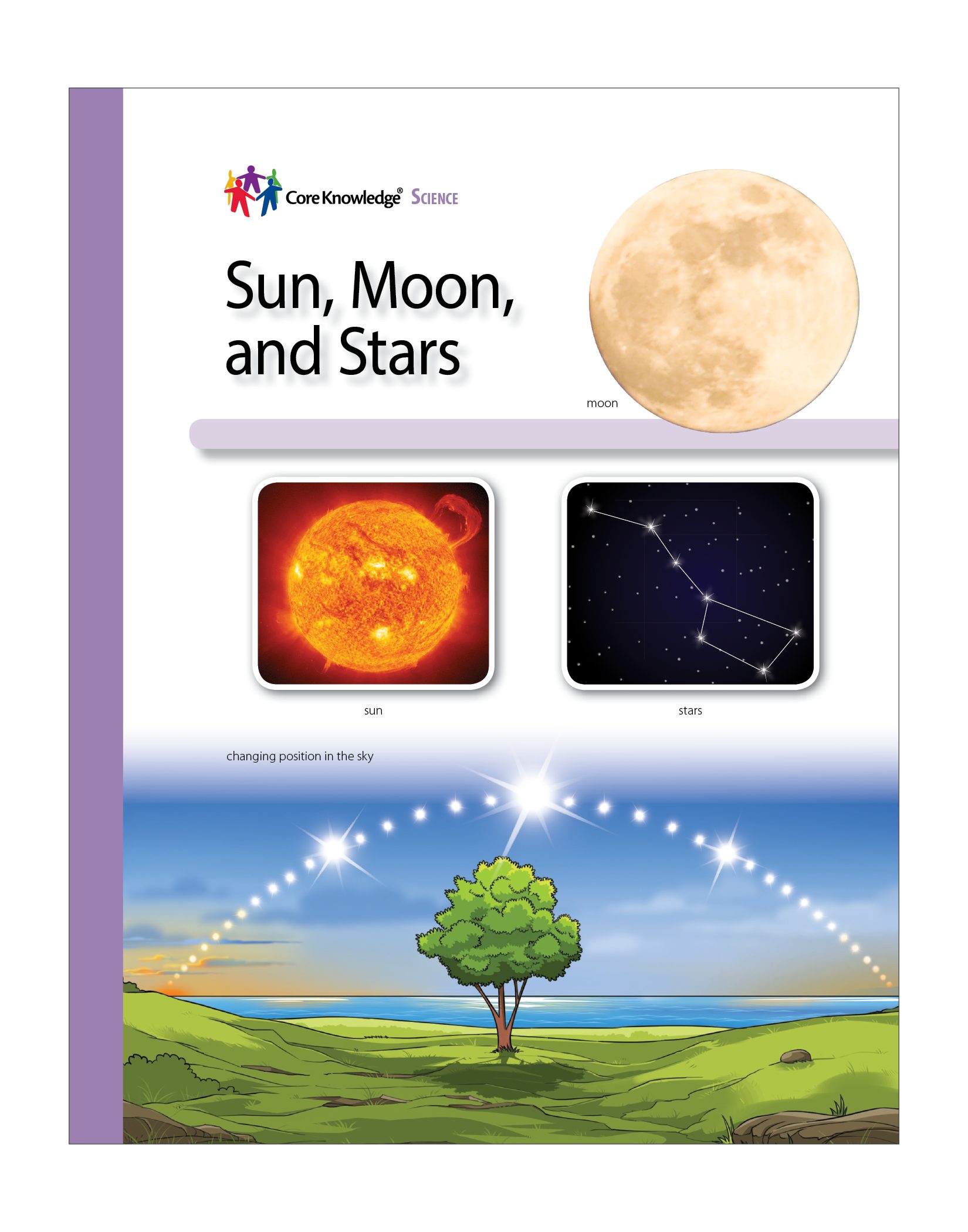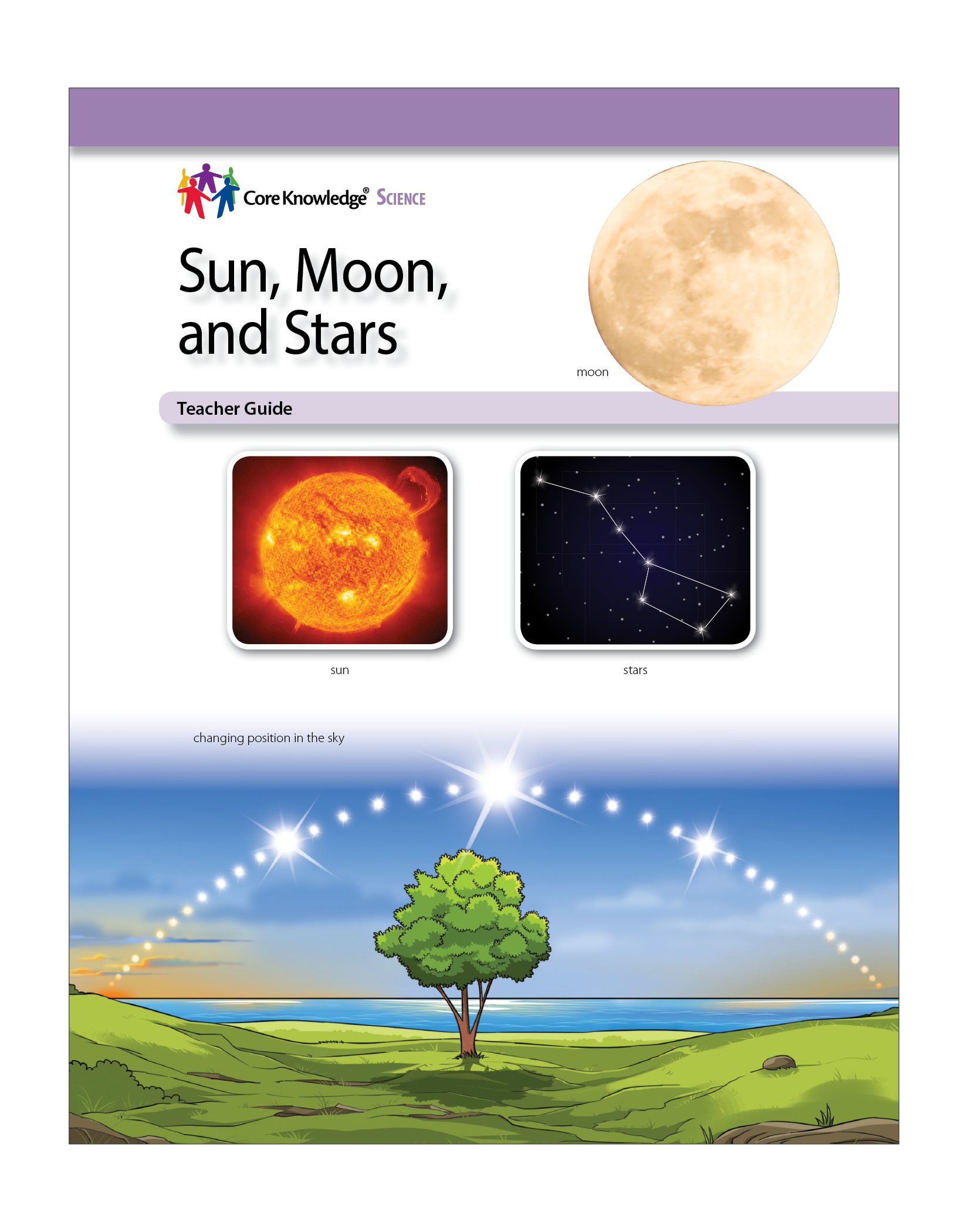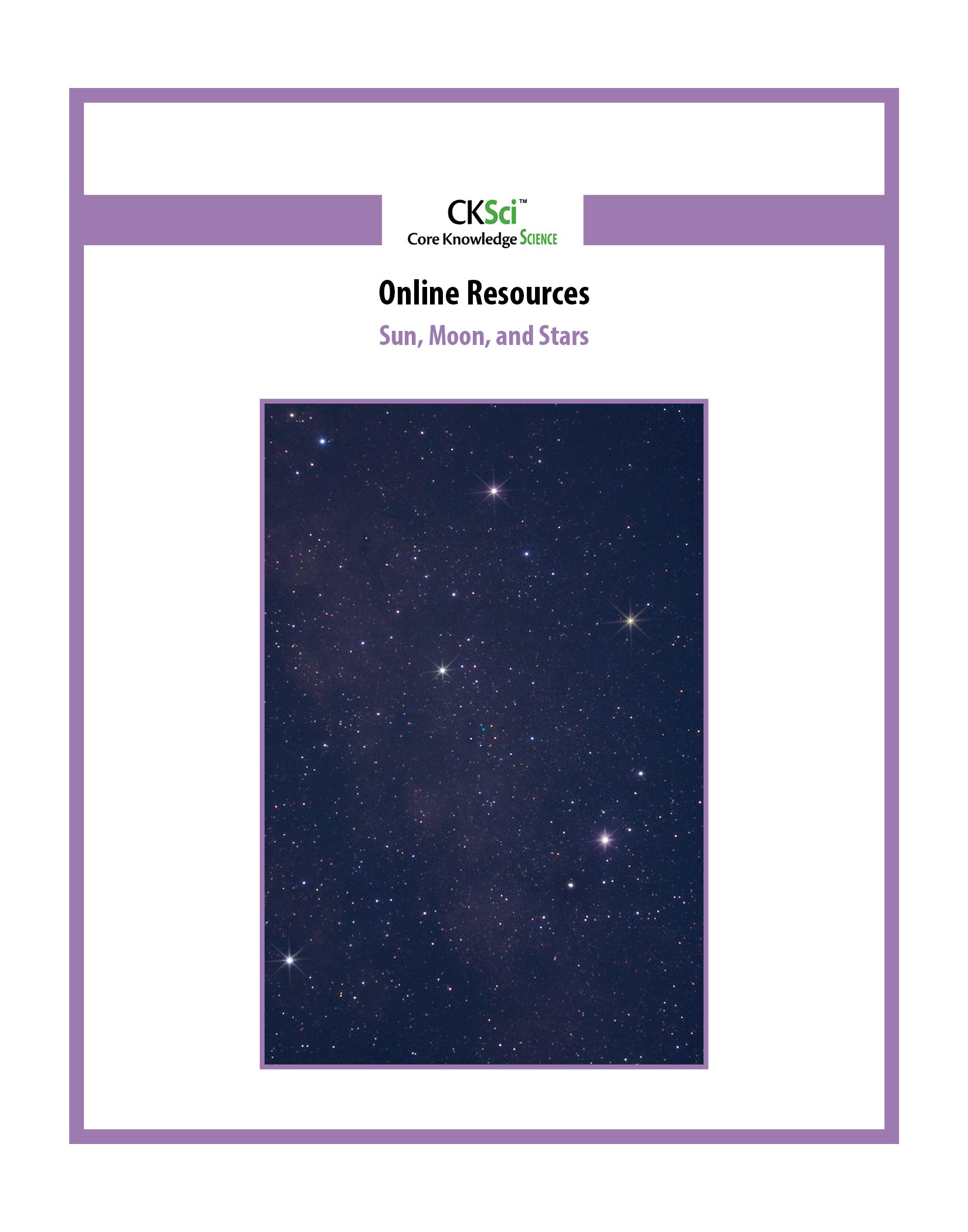
CKSci Unit 1: Sun, Moon, and Stars
Focus:
In this unit, students will methodically investigate the science of the patterns of the apparent movement of objects in space that they can see from Earth. Over the course of the unit, students will record observations of sun, moon, and stars over periods of time. By recording observations of these objects throughout the school year, students will learn about patterns in the sky.
The unit builds on student understandings about sunlight from kindergarten, such as K-ESS2-1: Use and share observations of local weather conditions to describe patterns over time. Lesson 1 also builds toward the Grade 1 target of 1-ESS1-2: Make observations at different times of the year to relate the amount of daylight to the time of year.
Students explore concepts that include the following:
- The sun appears to move across the sky in a predictable pattern throughout the day.
- Sunrise and sunset times throughout the year are related to periods of daytime and nighttime.
- The sun rises and sets in a predictable pattern.
- The amount of daylight changes during different seasons.
- Sunrise and sunset times can be predicted for future dates.
- The moon is an object in the sky.
- The moon appears to move across the sky in a predictable pattern.
- The appearance of the moon changes as it moves through different phases.
- The appearance of the moon in the future can be predicted.
- Stars and constellations are objects in the night sky.
- The Big Dipper appears to move in the sky.
- The location of the Big Dipper in the night sky can be predicted.
Scientists—including astronomers, climatologists, and meteorologists—observe, analyze, and study patterns of the apparent movement of celestial objects to describe patterns in the natural world to answer scientific questions. This series of lessons incorporates learning goals that support scientific principles and practices, such as analyzing and interpreting data, recognizing cause and effect, and planning and carrying out investigations.
Number of Lessons: 4
Instruction Time:
- This Unitincludes two long-term investigations. To accommodate these, we suggest that you teach this unit in “blocks” throughout your school year, some spaced weeks or months apart.
- The first long-term investigation involves observing the sunrise and sunset times throughout the year (September through May). The second long-term investigation involves observing the moon phases for a period of two consecutive months. Students will be required to present their findings or observations once a week as the investigations progress.
- Each lesson is divided into 4–6 lesson segments. During extended reporting periods, you will likely also turn your attention to teaching other science units.
- A Pacing Guide Template is provided within the Teacher Guide so teachers can map out customized instructional days for this unit.
- A complete list of Materials needed to complete the unit is provided in Online Resources.
Additional Search Terms:
sun • moon • star • daytime • nighttime • sky • east • west • north • south • direction • sunrise • sunset • moon • moon phases • constellation • astronomer • nonfiction • informational text



